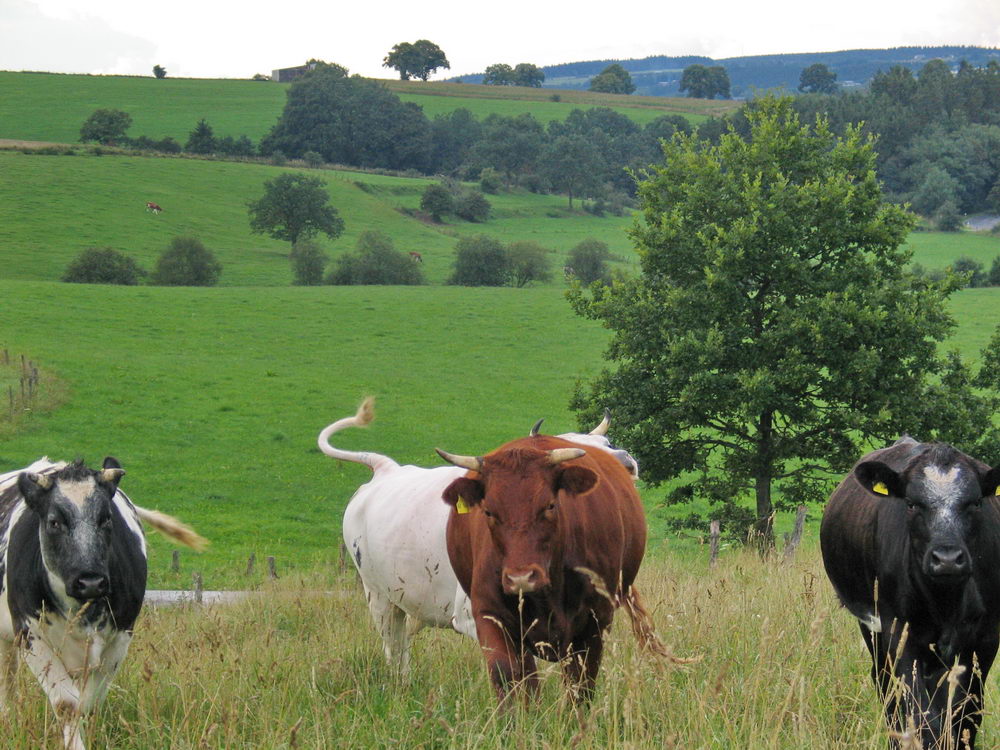In addition to several papers about farm animals in other sessions, this general session presents five papers on that topic. It takes place on Friday 17th May 10:00 – 12:10.
Chair: Matilde Coutant
10:00 – 10:20 Marie Schneider – Method comparison to analyse the activity rhythm of dairy cows during early lactation
Three methods for analysing activity rhythms in dairy cows were compared: Degree of Functional Coupling, Interdaily Stability, and Spectral Entropy. The potential effects of oestrus and regrouping on the rhythmicity measures were investigated. A visual analysis of boxplots revealed that each rhythmicity measure was affected by oestrus, while Degree of Functional Coupling and Interdaily Stability were additionally affected by regrouping. These two rhythmicity measures also had the highest correlation.
10:20 – 10:40 Laura Torres Borda – Equine social proximity according to space availability using ultra-wideband technology
In natural settings, horses live in groups with complex social dynamics with interindividual proximity indicating affiliative interactions. As horses share their personal space only with affiliative partners without triggering aggressive behaviours, inadequate enclosure sizes significantly impact horses’ welfare. This study used ultrawide-band technology to examine the impact of space availability (paddock versus pasture) on interindividual proximity in a horse group. Group dispersion varied with space, yet subgroup dynamics and affiliative partnerships remained consistent across environments.
10:40 – 11:00 Johanna Stenfelt – Olfactory Conditioning to Reduce Stress in Farm Animals – A Possible Experimental Set-up
The olfactory system projects directly onto areas of the limbic system involved in emotional processing, memory formation and retrieval, behavioural modulation, and initiation of the stress response. In a comparative study, we investigate if horses and dairy cattle can form positive odour associations through classical conditioning and, if so, whether the conditioned odour can be used to modulate affective states, mitigating fear and stress and thereby increasing animal welfare.
BREAK
11:30 – 11:50 Wijbrand Ouweltjes – An investigation of several methods to monitor behaviour of housed dairy cows
We monitor cows with multiple sensors: cameras, UWB tracking sensors, detection gates, accelerometers and pre-programmed pedometers. To retrieve information from cameras we have developed a software tool that can detect cows and 4 keypoints for each cow in snapshots of video footage. We investigate the insights in behaviour that can be obtained from data obtained from the different sensors, and assess the practicalities for each of them and explore potential farm management applications.
11:50 – 12:10 Christiane Engels – Measuring Dairy Cow Behavior Using a Barometric Sensor
Barometric sensors are widespread in smartphones and wearable devices and have many applications, mainly in human or vehicle tracking. In this study, we collected barometric pressure and acceleration data of dairy cow behavior with a collar mounted sensor in a free-stall barn. The goal is to distinguish between standing and lying behavior based on the sensor height inferred from barometric pressure.

 Measuring Behavior
Measuring Behavior